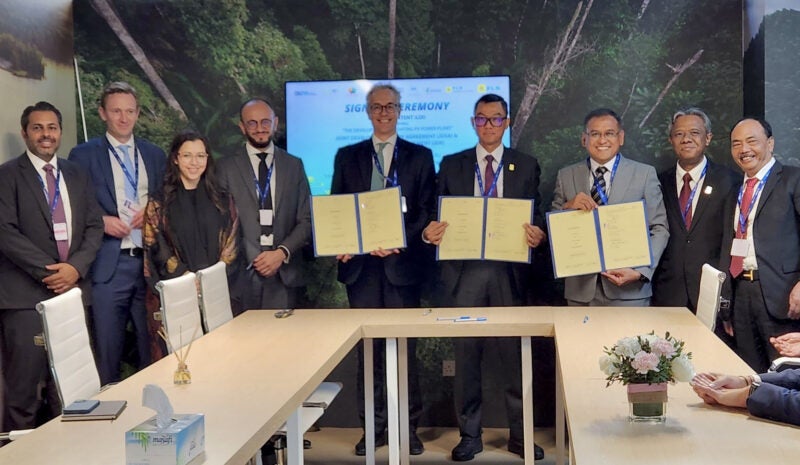
Saudi Arabia-based ACWA Power has agreed to develop the Garuda Hidrogen Hijau project (GH2) in Indonesia along with Perusahaan Listrik Negara (PLN) and Pupuk Indonesia with an estimated investment of over $1bn.
Both Perusahaan Listrik Negara and Pupuk Indonesia are owned by the Indonesian government. Perusahaan Listrik Negara is an electricity provider, while Pupuk Indonesia is a fertiliser and chemical producer.
The three parties signed an agreement pertaining to the project during the ongoing UN Climate Change Conference (COP28) in Dubai, UAE.
ACWA Power CEO Marco Arcelli said: “We are honoured to deepen our relationships with the government and government entities of this vibrant, ambitious nation through this new green hydrogen project.
“As we expand our footprint in Indonesia, we remain committed to supporting sustainable progress, for a greener future for all.”
According to ACWA Power, the Garuda Hidrogen Hijau project will be the largest green hydrogen facility in the Southeast Asian country.
The proposed Indonesian green hydrogen facility will operate on 600MW of solar and wind energy.
Once operational, the Garuda Hidrogen Hijau project will generate 150,000 tonnes of green ammonia annually.
According to ACWA Power, the bidding process for engineering, procurement, and construction (EPC) for the green hydrogen project in Indonesia is likely to commence in Q1 2024.
Financial close for the Garuda Hidrogen Hijau project is intended to be achieved by the end of 2025.
Commercial operations at the proposed facility are anticipated to begin in 2026.
Perusahaan Listrik Negara president, director, and CEO Darmawan Prasodjo said: “We see a strong commitment from the government, PLN, Pupuk Indonesia and ACWA Power, therefore we are ready to support this joint development effort of green hydrogen and green ammonia to achieve common goals.”
Through the Garuda Hidrogen Hijau project, ACWA Power is further expanding its green hydrogen portfolio.
The company said that work is in progress at the $8.4bn NEOM green hydrogen project in Saudi Arabia with completion planned in late 2026, while a second project in Uzbekistan had broken ground last month.






